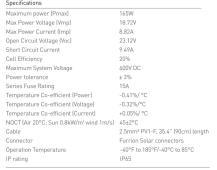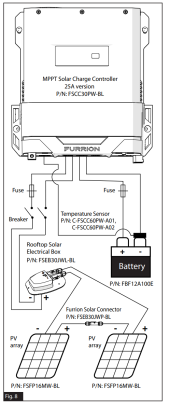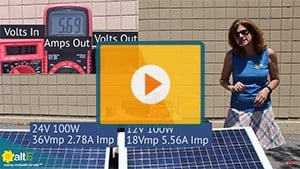rootusrootus
New Member
- Joined
- Jan 17, 2021
- Messages
- 55
I'm picking up a new RV, and it comes with a basic 165W panel on the roof (Furrion) and a 25A MPPT charge controller (also Furrion). No battery provided, aside from whatever garbage the dealer throws on. I'd like to build a decent system, ultimately capable of running a microwave occasionally (but never A/C) and big enough so we don't really worry about using lights and such when we are boondocking (typically two or three nights at a stretch is all).
I've kinda fallen down the rabbit hole. Spec'd myself out a nice big battery using eight 270AH cells (two 4S strings, staying 12V), though I haven't entirely ruled out some sort of drop-in. Expensive tho. Then I figured on a multiplus inverter/charger, and a smartshunt monitor. Not sure what I want to do with the panel on the roof. Adding another identical one would cost more than ripping off the Furrion and getting two of something else. Can only do 300W before I'd need a new charge controller.
So it starts getting pretty spendy in a hurry, and frankly, I just like to go camping a dozen times a year and I like some comforts from home. Hard not to just say 'hey wait a second, forget about the microwave, pick up a couple GC2 FLAs and call it good'. But in the long run I think I'd prefer lithium performance. And the RV has a 12V fridge, which apparently is a bit piggy and can suck down 90Ah a day.
How would you do this, to avoid draining the wallet all in one shot, and still work towards a pretty sweet setup without buying gear that will get tossed later as I upgrade?
I've kinda fallen down the rabbit hole. Spec'd myself out a nice big battery using eight 270AH cells (two 4S strings, staying 12V), though I haven't entirely ruled out some sort of drop-in. Expensive tho. Then I figured on a multiplus inverter/charger, and a smartshunt monitor. Not sure what I want to do with the panel on the roof. Adding another identical one would cost more than ripping off the Furrion and getting two of something else. Can only do 300W before I'd need a new charge controller.
So it starts getting pretty spendy in a hurry, and frankly, I just like to go camping a dozen times a year and I like some comforts from home. Hard not to just say 'hey wait a second, forget about the microwave, pick up a couple GC2 FLAs and call it good'. But in the long run I think I'd prefer lithium performance. And the RV has a 12V fridge, which apparently is a bit piggy and can suck down 90Ah a day.
How would you do this, to avoid draining the wallet all in one shot, and still work towards a pretty sweet setup without buying gear that will get tossed later as I upgrade?







